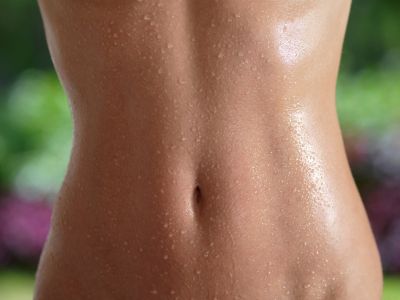Q - Power
Indoor Rowing Team
Heart Race or Pace
Heart Race or Pace: Training in the Heat
Training intensity is commonly described in terms of a percentage of heart rate reserve (HRR) where HRR is the span between resting heart rate (RHR) and maximum heart rate (MHR). The reason for this is that there is typically very good correlation between %HRR and %VO2max reserve. Of real interest is oxygen throughput, but it would be inconvenient to say the least to do every training session in a laboratory attached to a gas exchange analyser. Thankfully this correlation between HR and oxygen consumption allows us to dispense with the laboratory... most of the time.
Difficulties can occur when training in hot and humid conditions. The reason is that our oxygen transportation system (namely the circulating blood as pumped by the heart) also serves as our heat dissipation system. The problem is more apparent when one considers that we do not have enough blood in us to enable maximum delivery to all parts of us at the same time. Our bodies are good at reducing blood supply to particular areas when it is not needed (e.g. to the digestive system during exercise), for otherwise blood pressure would plummet.
When exercising in the heat, more blood is diverted to the skin in an effort to dissipate the extra heat. Unfortunately for the working muscle, that diverted blood is well oxygenated... but with oxygen that will not find its way anywhere near the muscles where it is needed. Accordingly, to deliver the same amount of oxygen to the muscles a larger total blood output from the heart is needed each minute, which means an increase in heart rate. There is probably no one reading this who has not noticed a significant increase in heart rate when trying to row for any appreciable length of time at a given pace in the hot weather. It can be particularly challenging in countries where the ambient temperature can increase rapidly and without warning for a few days at a time, removing much opportunity for acclimatisation (the UK being a good example).
So having established the problem and why it is there, how are you going to approach your 60 minute row at 75%VO2max this evening (an intensity which some might describe as UT1). 75%VO2max might equate to HR155 for a particular athlete, so you might expect to row the majority of the hour in the range HR145-155. Things start fine, but after 15 minutes you have already reached the cap, and after 25 minutes you are at HR165.... do you hold your "normal pace" or should you have been slowing down to stay in the band. It is an often debated point but the reality is that there is no right or wrong answer. It is only when one considers how your body responds to training that one can clearly (hopefully) see why that is so.
Many of the adaptations which occur from distance training do so locally, i.e. in the specific muscles and muscle cells that are involved in the exercise activity in question. Indeed it is for the purposes of bringing about those adaptations that people row long relatively low intensity sessions in the first place. As a general rule, the greater the oxygen throughput, the greater the stimulus to adapt per minute of training. The problem is that this puts a strain on your nervous system which can only handle a certain amount of load (which is where heart rate variability (HRV) comes in handy to monitor it). If you like, running your total muscle mass at 75%VO2max comes at a cost to your body as a whole. Providing the total training load is controlled, it is not a problem and your body will handle that cost.
When you are training in the heat and your heart is having to beat 175 times a minute rather than 155 times a minute to maintain the same oxygen throughput, even though your muscles are getting the same workout the cost is very much higher.
So you have a choice. If you are training in a manner where you are very conscious of the total training load and are sitting quite close to the line (a place where Q-Power athletes generally live), then you are going to have to control the "cost" of the session and work to heart rate. Yes, it means you muscles are only going to get a 65%VO2max workout rather than the 75% you were looking for... which is why it is a very good idea to train in nice cool conditions (unless you are preparing to compete in a hot climate which case acclimatisation obviously becomes important).
On the other hand, if your training is more limited by the amount of time you have available and your body is coping with the training load easily, the chances are that an increase in the cost of training will not be the end of the world... although when that hot weather first arrives it might feel like it for a few days. However be sensible and take the strain off as much as you can - plenty of water, some electrolytes to help absorb that water, and a fan or two to minimise the damage.

(Above) If your training session feels like this then you should read this article.

(Above) This shows the impact humidity can have.
(Below) So does this.

(Below) Nothing wrong with a bit of dreaming...

